A lot of media and industry comments about electric vehicle charging in Australia assume that everyone who buys an electric vehicle such as a car or motorbike will be able to charge at home in their own home garage or off street parking driveway.
However a large minority of Aussies don’t have a home garage or personal driveway outside their house, they may not live in a standalone house at all as the number of apartment dwellers grows.
So either way these future EV owners will have to park on the street kerb side or under their apartment block tower.
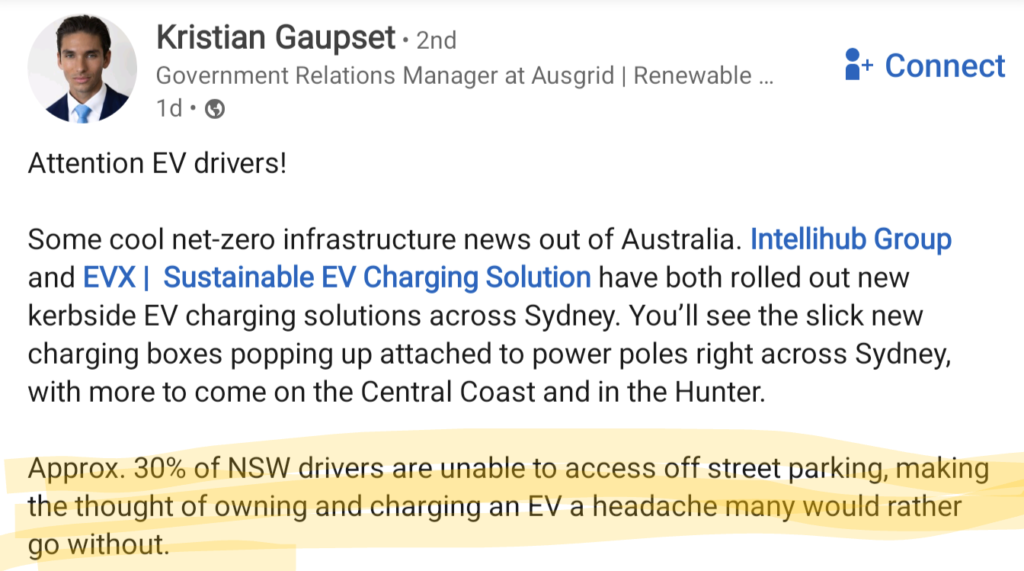
How will these people be able to regularly charge their electric car or motorbike?
Will they have to use relatively expensive DC fast charging sites every week?
The Situation Right Now in 2024
View of Ross De Rango (Electric Vehicle Council):
Standalone houses in our country are built with many services physically connected to and from the street. Water coming in, stormwater going out, sewage going out, gas coming in, electricity coming in, communications cabling for upload and download. A lot of individual pipes and cables, deployed and maintained by different organisations, and much of it essential in nature.
In many cases, these services are connected under the footpath. In some cases, for some services, they’re connected overhead, far enough above the footpath and the road that there’s no risk of a pedestrian getting clotheslined by them, minimum risk of a local kid accidentally taking them out with a stick, and minimum risk of a garbage truck accidentally taking them out with a bin lifter.
Many drivers acquiring EVs in suburbs without off-street parking are looking for a new ‘home to street’ service – one where electricity can go back out from the home, to charge the car parked in front of the house, while the usage and billing is captured as part of the electricity consumption in the home.
The ‘what happens if nothing is done’ scenario here is an extension lead pulled across the footpath. This has been extensively covered in the media, with lots of outrage attached.
Putting the noise to one side, it’s not a good idea, mainly because if you run a cable over a footpath someone will eventually trip over it and hurt themselves. It’s not a practice the EVC endorses or recommends.
For much the same reason, we’re not favourably inclined towards solutions where the cable rests on the footpath with a cover over the top, or where a channel is cut in the footpath and the cable is routinely deployed and then put away by the homeowner.
There will very likely be occasions where someone in a hurry fails to use those solutions correctly, and it’s easy to foresee that the result may well be an injury.
View of Sarah Aubrey (Admin & Moderator of Electric Vehicles for Australia):
Inner city suburbs like the inner west of Sydney were designed before the car was invented. The percentage of households without off street parking in these areas is 65%, much higher than the State average of 30%.
That’s huge. Two thirds of households wouldn’t be able to charge at home.
I think if we’re serious about climate solutions, reducing pollution and encouraging EV uptake in these inner suburbs, we need to look seriously at gully or channel charging.
I like to look to the UK as they’re further ahead in their uptake, but have the same issue of lack of off street charging. They’ve trialled several options like charge arms, gully charging and pole charging and all research so far concludes gully charging like Gul-e or Kerbo Charge are the most affordable and least complained about by neighbours.
“Back in 2019 Oxford City Council trialled 5 different charging solutions for residents without access to off-street parking, including cable gulleys. The trial found that whilst there is no ‘one size fits all’ solution for on-street charging, a home charger and simple cable gully solution was the cheapest, most highly utilised solution, as well as the one least likely to elicit complaints from neighbours.”
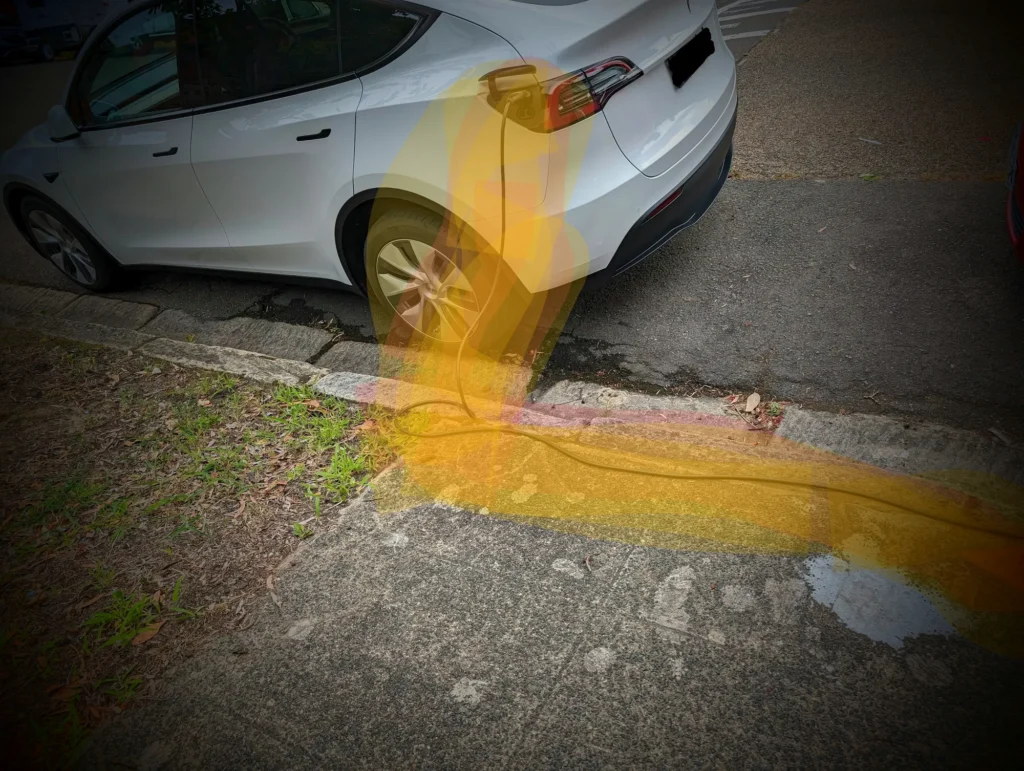
Possible New Solutions
View of Ross De Rango (Electric Vehicle Council):
The right way to run a service between the home and the street is either under the footpath, or sufficiently above the footpath that it’s out of the way, rather than on top of the footpath.
We’ve already worked this out over a period of many decades with a multitude of other ‘home-to-street’ services in our cities.
In the context of EV charging, this could potentially be done in a variety of ways. A fixed installation under the footpath (as trialled in City of Port Phillip) can work. An arrangement where there’s a swing-arm that comes out from the property at a sufficient height above the footpath can work. Every potential approach will need to be considered through multiple lenses, such as:
- meeting the driver’s needs
- electrical safety
- potential impact on pedestrians.
Crucially, any approach used will need to be acceptable to the local government responsible for the footpath and kerbside environment.
There’s over 500 local governments in Australia, so consensus on what approaches are allowed can be expected to take a while, and this will mean the businesses developing solutions to offer consumers face a very fragmented market.
The EVC supports these things being tried out. Innovation within reasonable safety limits is how we discover the best ways to do things.
View of Sarah Aubrey (Admin & Moderator of Electric Vehicles for Australia):
The real problem is that councils are not getting out ahead of this. UK councils are trialling many options, but we’re so behind.
Personally I don’t think a pop up charger is a viable solution. It would cost $6000+ and if you couldn’t get that parking spot you’d be beside yourself, plus that’s a lot of public charging money.
Something like Gul-e or Kerbo Charge is far more affordable and if you didn’t get that spot you wouldn’t lose your mind.
A few days ago Kerbo Charge gained 50,000 pounds funding on BBC TV show Dragons Den UK and they are organising trials with over half a dozen councils there.
Another possible solution is a service like Bow Charging which wants to connect Sydney EV drivers without home chargers to nearby homeowners with solar, offstreet parking & home EV charger.
In reality we’ll have to look at all these other options, because in areas like the inner suburbs of Sydney, Melbourne and Brisbane there will never be enough public chargers to service that many households. It’s just not feasible, we need to have a mix.
The reality is we’re in a climate emergency and we’re dithering about why we shouldn’t do things instead of trialling as many solutions as possible to see what works best.
We need to shift as quickly as possible to electric cars, and it’s ironic that supposedly progressive councils are so resistant to these solutions.
As an inner west resident, I want to take advantage of my solar array, so I’m not using grid power which is still predominantly coal powered, because that is by far the most sustainable way to charge an EV.
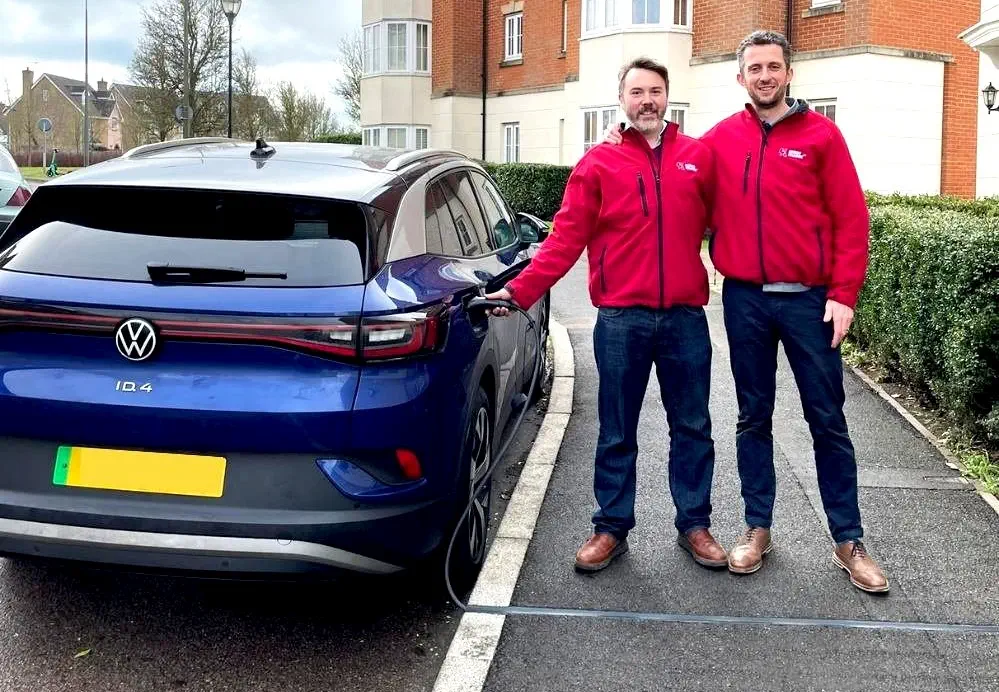
Most Probable Solution
View of Ross De Rango (Electric Vehicle Council):
This said, it’s looking like the most probable solution to this challenge in the Australian context will be power-pole mounted EV chargers in residential streets characterised by a lack of off-street parking, accessible to any driver, and priced slightly above the cost of charging in a driveway or garage.
The price point is important, so that they don’t get blocked up by people who don’t actually need them chasing a cheaper price than they can get at home.
There’s a few reasons for this:
- Installing a solution to take power from your property, to a parking space in front of your house
- Does not guarantee you the right to park in front of your house, it’s a public street. In some suburbs, neighbours don’t park in front of each other’s houses, but this is far from universal.
- Might suit you if you own the place…. But if you’re renting, who pays for the installation? Landlord or tenant? Relative rates of solar panel uptake is the split-incentive example here….
- Mounting it on the public power-pole instead:
- Means the asset can be used by multiple drivers (sharing the cost)
- Creates a revenue stream for the networks that own the poles – so they’ll support it and help make it happen.
- Dispenses with the requirement for wires to go under or over the footpath, which will reduce some compliance and red tape challenges.
- Means that the drivers pay nothing upfront, instead just paying for energy usage over time.
In closing – this isn’t a ‘one-size-fits-all’ kind of problem. There is no silver bullet here, it’s a target that calls for silver buckshot!
View of Sarah Aubrey (Admin & Moderator of Electric Vehicles for Australia):
Pole charging is great, but they’re still a terrible trip hazard with cables everywhere. They’re also incredibly expensive.
The biggest issue here is fairness. At the petrol bowser we’re all equal, but that isn’t the case with EV charging. Someone with an EV Energy Plan pays only 8c/kWh from midnight to 6am or even free energy from 11am to 2pm, whereas public chargers start on average from 50c/kWh.
How is that fair? Why should people without off street parking pay more than five times the price for charging? This inequality is really becoming an issue in the UK and I only see it becoming one here.
In both the UK and Australia, 80-90% of EV owners have the ability to charge at home.
If we’re serious about EV uptake for people without access to off street parking, we need to make it as easy as possible, make it fairer, and provide as many different options as possible
Otherwise people will just think stuff it, I’m just going to throw my cord out and risk it or or worse still they’ll stick with their fossil fuel cars.
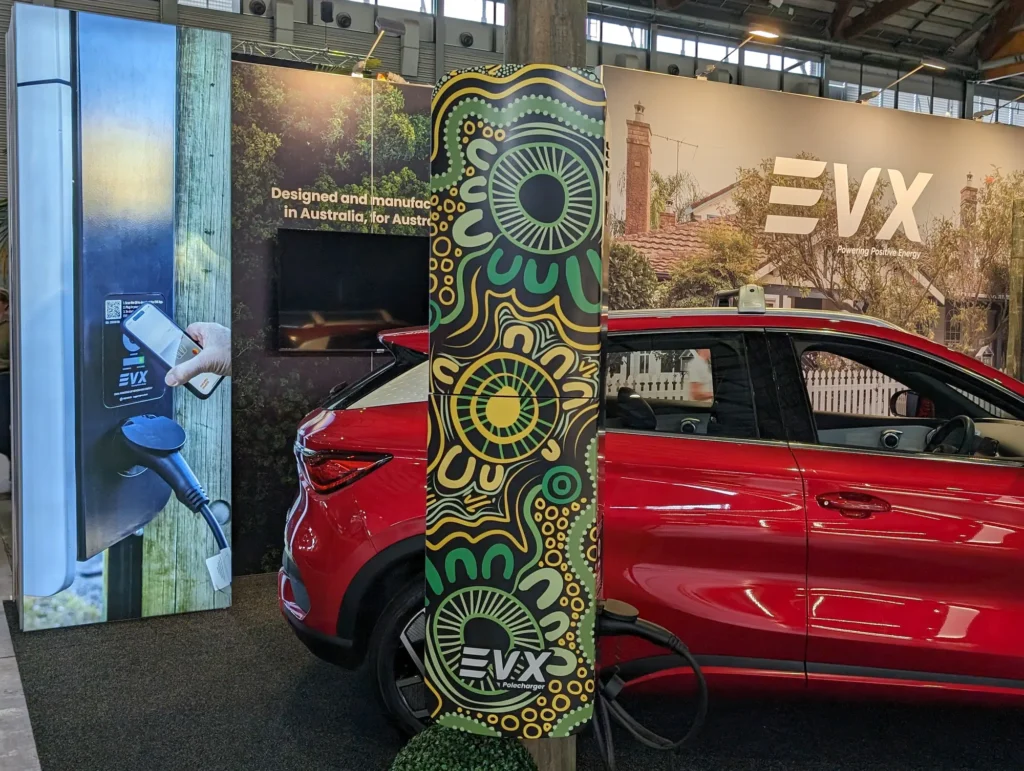
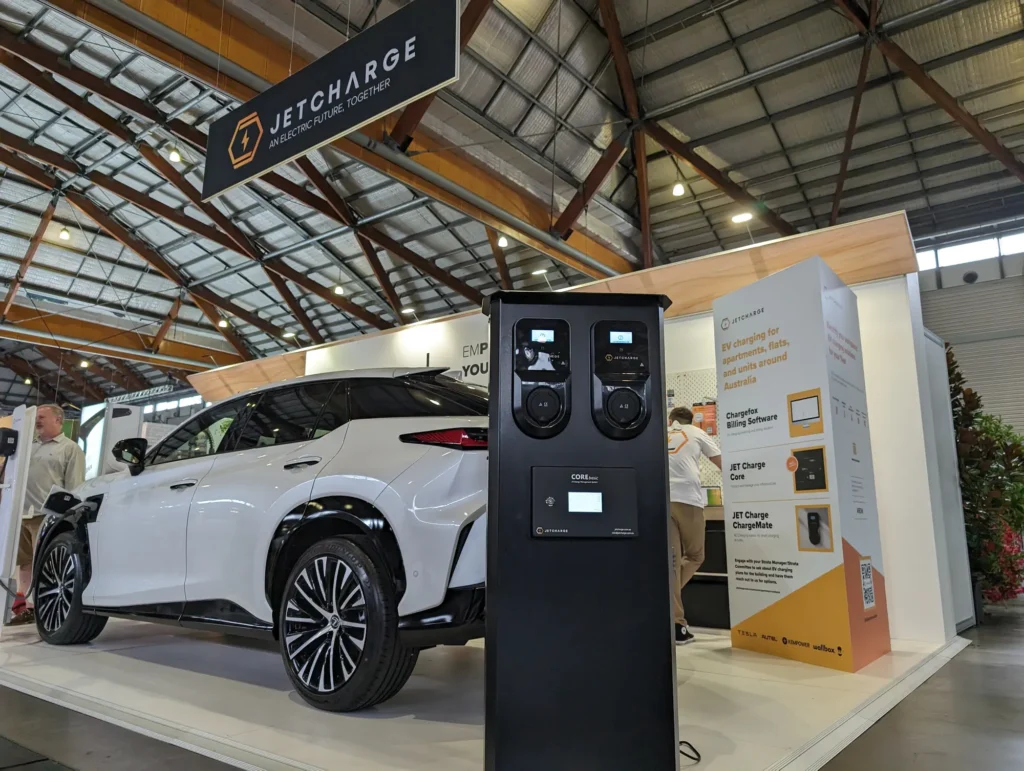

Leave a Reply